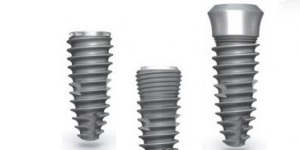
برتری ایمپلنت بر پروتزهای دندانی
2015-12-30
بررسی رشد دندان و محدویت سنی برای ایمپلنت
2015-12-30We tend to think about teeth as individual units, your dentist even gives each tooth a name and number, but in fact they make up a complete system, each one adding to its neighbor to function as one. Think about how the keystone in an arch holds all the other stones or bricks in place. For purposes of description we can think about the human dentition (full complement of teeth) as being composed of the anterior (front teeth) and posterior (back) teeth. The anterior teeth (the canines and incisors) are used for cutting and tearing food, and the posterior teeth (the premolars and molars) are used for grinding and chewing
Importantly, the posterior teeth also support the vertical height of the face. If they are lost, the face tends to lose height and close down; this is called “posterior bite collapse”. Unlike implants, teeth move; not only do changes occur to the remaining back teeth affecting their spacing and biting function, these changes also put pressure on the front teeth which tend to move or splay forward
All of these changes have implications for normal form (aesthetics) and function (bite). They also have ramifications for other facial and jaw structures which can affect anything from the skin to muscles and jaw joints. Appearance begins to change as the height of the jaw decreases, wrinkles increase and the corners of the mouth droop. Additionally, it can become difficult to eat food because the front teeth were not designed for chewing. This is to say nothing of the social consequences of tooth loss; smiling, talking, singing, laughing and enjoying a nutritionally sound diet all leading to both poor general and mental health
reference
related content






